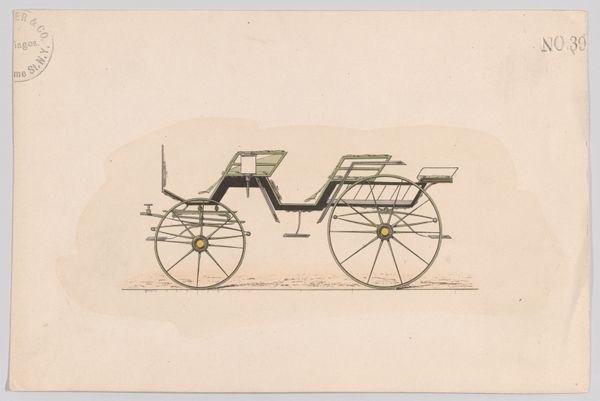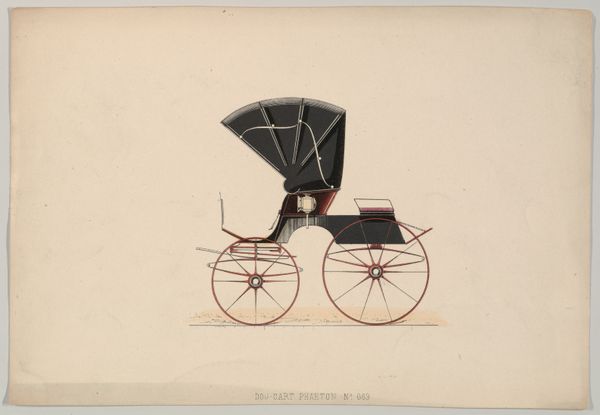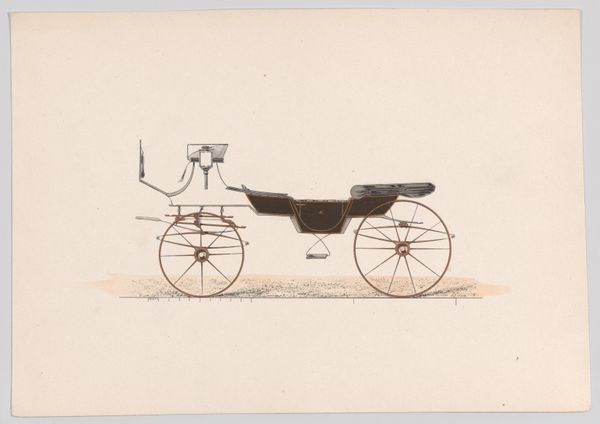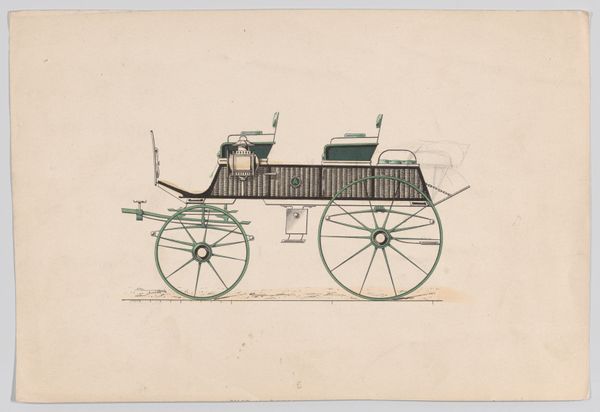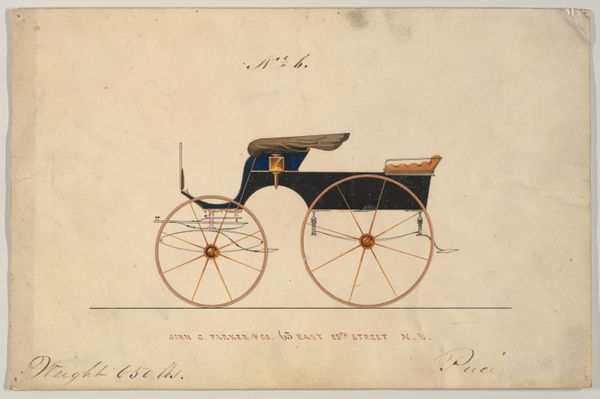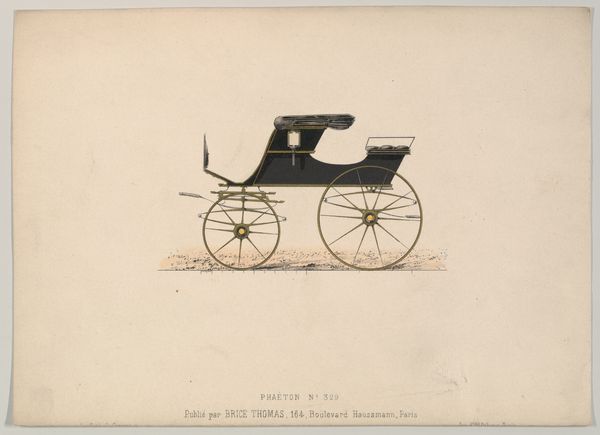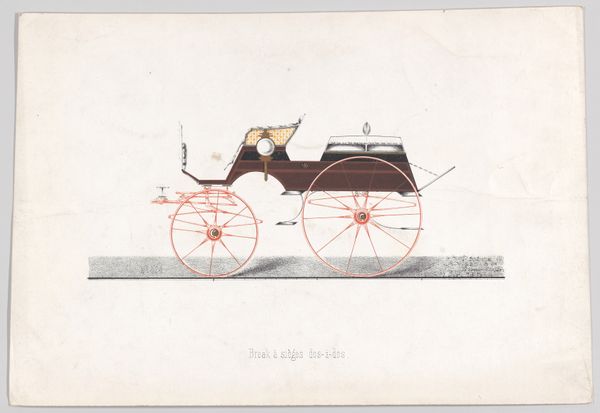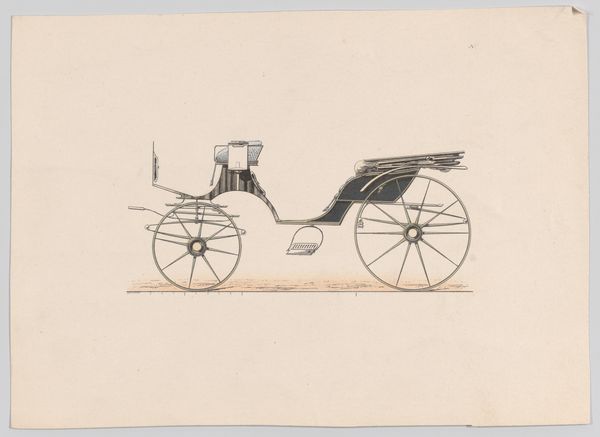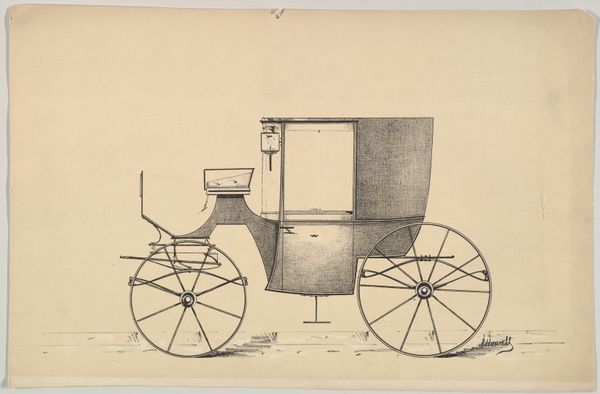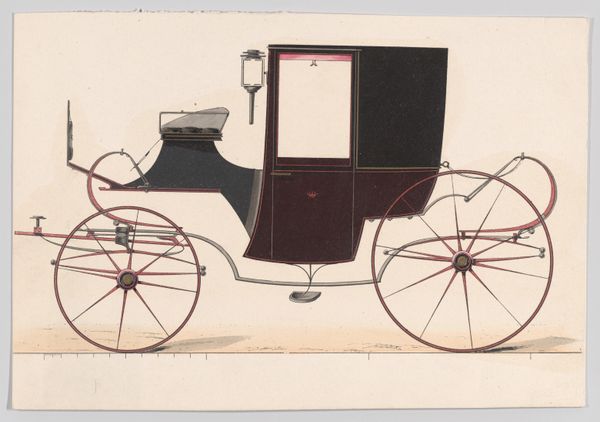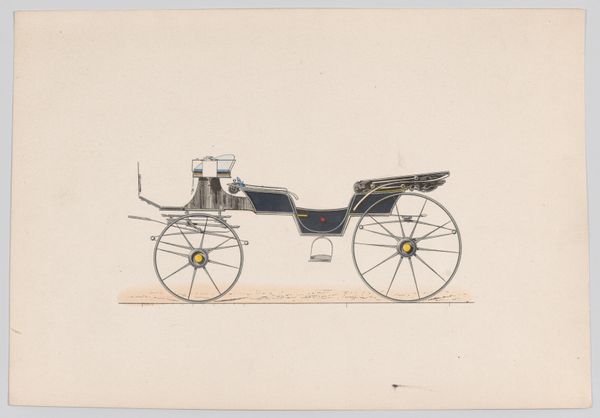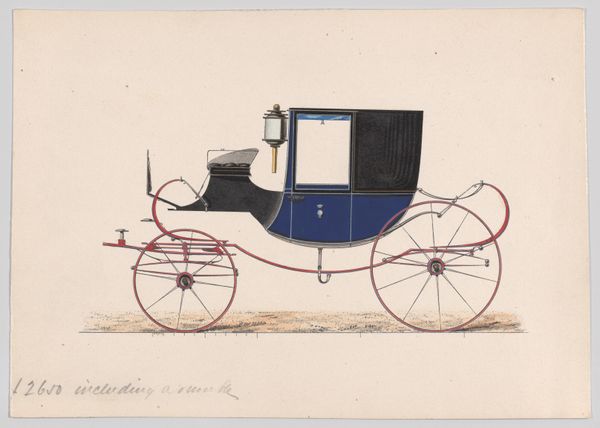
Design for Phaeton, no. 288, from Le Guide du Carrossier 1865 - 1875
0:00
0:00
drawing, graphic-art, lithograph, print
#
drawing
#
graphic-art
#
lithograph
# print
#
geometric
#
line
#
history-painting
#
academic-art
Dimensions: sheet: 6 1/8 x 8 1/2 in. (15.6 x 21.6 cm)
Copyright: Public Domain
Editor: Here we have Brice Thomas's "Design for Phaeton, no. 288, from Le Guide du Carrossier," created sometime between 1865 and 1875. It's a lithograph, quite linear and precise. There's a certain elegance to this image, but it also feels quite utilitarian. How do you interpret this work? Curator: It is intriguing, isn't it? What we're seeing is not merely a design but a glimpse into the burgeoning industrial culture of the mid-19th century. "Le Guide du Carrossier" itself speaks volumes. It was a manual, a guide—a very *public* document. This wasn’t high art meant for salon walls; it was a blueprint intended for workshops. Editor: So, the “art” aspect is almost incidental? Curator: Not incidental, precisely, but purposeful. Consider the rise of industrial design as a profession. Craftspeople now had access to standardized models, promoting consistency and potentially hindering more individual innovation. Think about the shift in artistic control embedded in such a system. How do you see this piece fitting into that context? Editor: I see how the print's precise lines could have dictated a design that stifled creativity, yet there is beauty in this pre-photography age. Curator: Precisely. This Phaeton design existed at a crossroads – attempting to impose a stylistic ideal but also becoming a social symbol of the evolving world around it. Editor: That definitely gives me a fresh appreciation for this piece! It shows a whole other aspect of art. Curator: And that interplay is, for me, what makes engaging with these images such a continuously rewarding project!
Comments
No comments
Be the first to comment and join the conversation on the ultimate creative platform.
